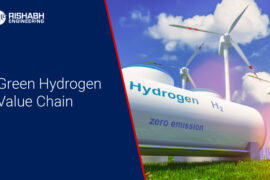Hydrogen, mainly green hydrogen, has emerged as a beacon of hope in the transition toward cleaner energy. Hydrogen, produced through renewable energy sources and emitting no greenhouse gases during combustion, promises to revolutionize the energy landscape.
Navigating the Green Hydrogen Value Chain
Green hydrogen is a powerful contender for a more sustainable and environmentally friendly energy landscape. It has the potential to revolutionize various industries while significantly reducing carbon emissions. We must explore the intricate framework of developing green hydrogen to understand its full potential.
Detailed Engineering Considerations for Project Success
Engineering projects today require meticulous planning and execution across various phases as they serve as the cornerstones of success. As part of this, one of the most critical stages is detailed engineering –where the project blueprint takes shape and becomes a reality.
Process Modeling & Simulation Using AspenTech Software in Multidisciplinary Engineering
For the ever-evolving world of industrial processes and engineering, the importance of accurate and efficient simulations cannot be overstated. And, with the increasingly complex nature of interconnected industries, the need for reliable and versatile simulation tools has never been more critical.
Green Hydrogen Production in 2023
As the world grapples with the urgent need to transition towards cleaner and more sustainable energy sources, green Hydrogen has emerged as a promising solution. In 2023, significant strides have been made in producing green Hydrogen, leveraging renewable energy sources and advanced technologies.




